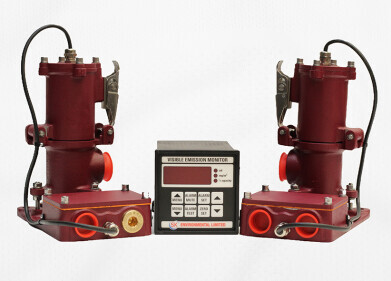-
 Upland Tundra Landscape Autumn
Upland Tundra Landscape Autumn -
 Upland Tundra
Upland Tundra -
 Automated Chamber Measurement Set-Up
Automated Chamber Measurement Set-Up -
 Field Work Conditions
Field Work Conditions
Air Monitoring
Arctic Soil Methane Consumption: A Deeper Look into its Impact in Drier Climates
Sep 06 2023
Arctic wetlands have long been recognised as sources of the potent greenhouse gas methane (CH4). Conversely, well-drained soils play a crucial role in removing methane from the atmosphere. In the expansive Arctic and boreal biomes, these well-drained upland soils, with their substantial potential for methane consumption, cover more than 80% of the land area. However, despite their vast coverage and potential significance in methane uptake, the underlying mechanisms, environmental factors, and the actual magnitude of Arctic soil methane consumption remain poorly understood.
A recent study led by researchers from the University of Eastern Finland and the University of Montreal challenges our previous assumptions by suggesting that Arctic soil methane consumption might be more substantial than previously believed. This consumption is also found to increase under drier conditions and with the availability of labile carbon substrates. Their findings have been published in the prestigious journal Nature Climate Change.
The primary research location was Trail Valley Creek, a tundra site in the Western Canadian Arctic. To conduct their investigations, the researchers employed a unique experimental setup comprising 18 automated chambers designed for continuous methane flux measurements. Notably, there are very few automated chamber systems in the Arctic, with most of them installed at sites emitting methane. Thus, the high-resolution measurements taken (more than 40,000 flux measurements) revealed previously unknown diurnal and seasonal patterns in methane consumption. For example, while methane uptake was highest during the afternoons in early and peak summer, coinciding with maximum soil temperature, it peaked during the night in late summer. Although the biogeochemical mechanisms driving these patterns are intricate, the study highlights that the most significant methane consumption aligns with peaks in ecosystem carbon dioxide (CO2) respiration. Additionally, data from various sites across the Arctic in Canada and Finland indicate that the availability of labile carbon substrates and nutrients may enhance methane consumption in Arctic soils.
These findings have broader implications for our understanding of the current Arctic methane budget and predicting how Arctic soil methane consumption will respond to a changing climate. The study suggests that the rate of high-latitude warming, which is occurring up to four times faster in the Arctic compared to the rest of the world, will have a relatively smaller effect on promoting atmospheric methane uptake than the concurrent large-scale drying of the region.
Conducted by an international team of researchers from Canada and Finland, with collaborators from the United States and Germany, this study received funding from sources such as the Academy of Finland, the Canada Foundation for Innovation project Changing Arctic Network, ArcticNet, and the Canada Research Chair and NSERC Discovery Grants programs. Fieldwork was made possible through support from Metsähallitus and the Aurora Research Institute.
Digital Edition
IET 34.2 March 2024
April 2024
Gas Detection - Biogas batch fermentation system for laboratory use with automatic gas analysis in real time Water/Wastewater - Upcycling sensors for sustainable nature management - Prist...
View all digital editions
Events
May 05 2024 Seville, Spain
May 06 2024 Minneapolis, MN, USA
May 13 2024 Munich, Germany
May 15 2024 Lund, Sweden
May 15 2024 Frankurt-am-Main, Germany

















